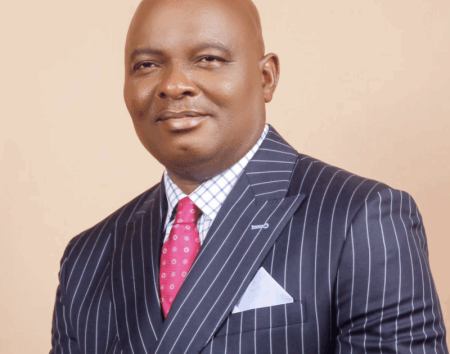Kwabena Frimpong, the Deputy Protocol Director of the New Patriotic Party (NPP), has vehemently opposed proposals to prioritize the election of the party’s flagbearer over internal elections for other party positions. He argues that such a move would deviate from the NPP’s established bottom-up approach, a cornerstone of the party’s internal democratic processes. This approach, he insists, is crucial for maintaining party unity and ensuring a strong, grassroots-driven organization. Frimpong uses analogies to highlight the flawed logic of electing a flagbearer before establishing a solid party structure. He compares it to attempting to drive a damaged car to Kumasi without repairs and to building a house by starting with the roof instead of the foundation. Both scenarios, he points out, are inherently illogical and destined for failure. He emphasizes the importance of building from the ground up, starting with polling station executives, then electoral area coordinators, followed by regional executives, and finally, the national leadership. Only after this foundational structure is in place, Frimpong argues, should the party proceed with electing a flagbearer.
Frimpong’s core argument revolves around the importance of the NPP’s grassroots foundation. He believes that the party’s strength and vitality stem from its vibrant base at the polling station level. Electing the flagbearer first, he contends, would effectively disenfranchise the grassroots, undermining their voice and weakening the democratic principles that underpin the NPP. This top-down approach, he warns, risks imposing leadership on the party rather than allowing it to organically emerge from the ground up. Such an imposition could lead to favoritism, manipulation, and the selection of candidates preferred by those in power, eroding fairness and trust in the electoral process. He cautions that this could result in the sidelining of potential aspirants perceived as unfavorable to the pre-selected flagbearer, further exacerbating divisions within the party.
The potential for internal conflict and disunity is another key concern for Frimpong. He highlights the historical precedence of the NPP’s bottom-up approach, crediting it with minimizing internal strife. By first establishing a solid party structure, the NPP has traditionally avoided the kind of factionalism that could arise if a flagbearer were elected prematurely. He warns that electing a flagbearer first could incentivize aspirants to prioritize installing loyalists across various party levels, thereby undermining the goal of building a united and efficient party machinery. This focus on individual ambition over party unity, he argues, could severely damage the NPP’s ability to effectively mobilize for national elections.
Frimpong underscores the importance of organizational efficiency and mobilization, arguing that a legitimate and robust executive base at all levels is essential for a successful election campaign. He asserts that a flagbearer elected before the establishment of such a structure would lack the necessary support system to run a cohesive and effective campaign. By prioritizing the election of party executives, the flagbearer inherits a functional and representative party already prepared for the challenges of a national election. This structured approach, he believes, is critical for ensuring the party’s readiness and maximizing its chances of electoral success.
Furthermore, Frimpong emphasizes the importance of checks and balances within the party. He argues that electing party executives before the flagbearer would create a system of accountability within the party structure. This, he suggests, would be particularly important during the formation of critical bodies like the National Campaign team and the Manifesto committee. By having established party executives in place before the flagbearer is chosen, it prevents the flagbearer from stacking these crucial committees with loyalists. This ensures a more balanced and representative approach, including members from different factions within the party, ultimately fostering a more unified and effective campaign.
In his concluding remarks, Frimpong reiterates his commitment to the NPP’s traditional bottom-up approach, which he views as instrumental to the party’s past electoral successes. He urges the party to resist any attempts to centralize power and instead maintain trust in the structures that have historically served the NPP well. He reinforces his belief that building from the grassroots upwards, starting with polling station executives and culminating in the national leadership, is the most effective way to ensure a strong, united, and election-ready party. He emphasizes that this solid foundation should be in place before the party chooses its next flagbearer, drawing a parallel to the logical progression of building a house from the foundation upwards, rather than starting with the roof. This, he believes, is the only way to ensure a strong and stable structure for the NPP’s future.














